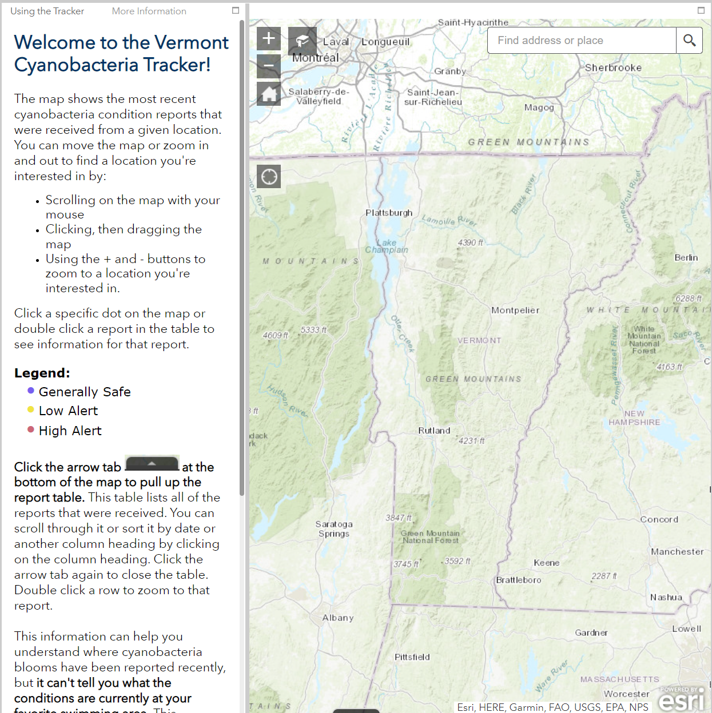Tracking Cyanobacteria in Vermont
Cyanobacteria, also known as blue-green algae, are naturally found in fresh water in the U.S., and in Lake Champlain and other Vermont waters. Some types of cyanobacteria can release natural toxins or poisons (called cyanotoxins) into the water, especially when they die and break down.
Cyanobacteria grow well in water that has high amounts of nutrients like phosphorous and nitrogen. Cyanobacteria can multiply quickly to form surface scums and dense populations known as blooms, especially during the warm days of late summer and early fall. In recent years, cyanobacteria blooms have occurred most often in northern sections of Lake Champlain — such as St. Albans Bay and Mississquoi Bay.
Cyanobacteria Tracker Map
Explore the Cyanobacteria Tracker Map
The Cyanobacteria Tracker Map is a data collaboration project of the departments of Health and Environmental Conservation and the Lake Champlain Committee. The interactive map allows you to:
-
Check recent lake reports
-
Search by lake region, or by town
-
View the latest results by test site
-
Click on the site’s alert status for more information
Not all Vermont bays, lakes, and ponds are monitored. Be aware of changing conditions, and keep out of the water if you think cyanobacteria may be present.
NOTE: The map provides information and data as of the date of report. Test site observations and samples are collected once each week. Conditions can and do change. If you see cyanobacteria, don't go in the water.
Since 2003, the Lake Champlain Committee (LCC) has trained citizen volunteers to monitor for cyanobacteria at lakeshore locations. Volunteer monitors, along with staff from the Vermont departments of Health and Environmental Conservation, file weekly online reports that are then displayed on the Cyanobacteria Tracker Map. The program helps citizens, along with health, environmental and recreational officials, assess the safety of our beaches. It also provides important data to help us further understand when and why blooms occur.


